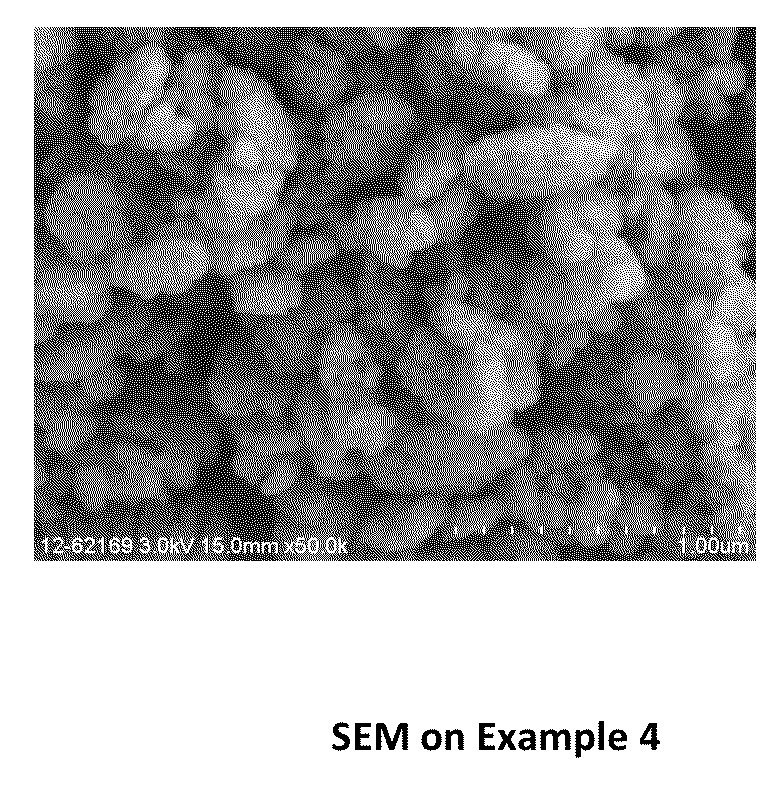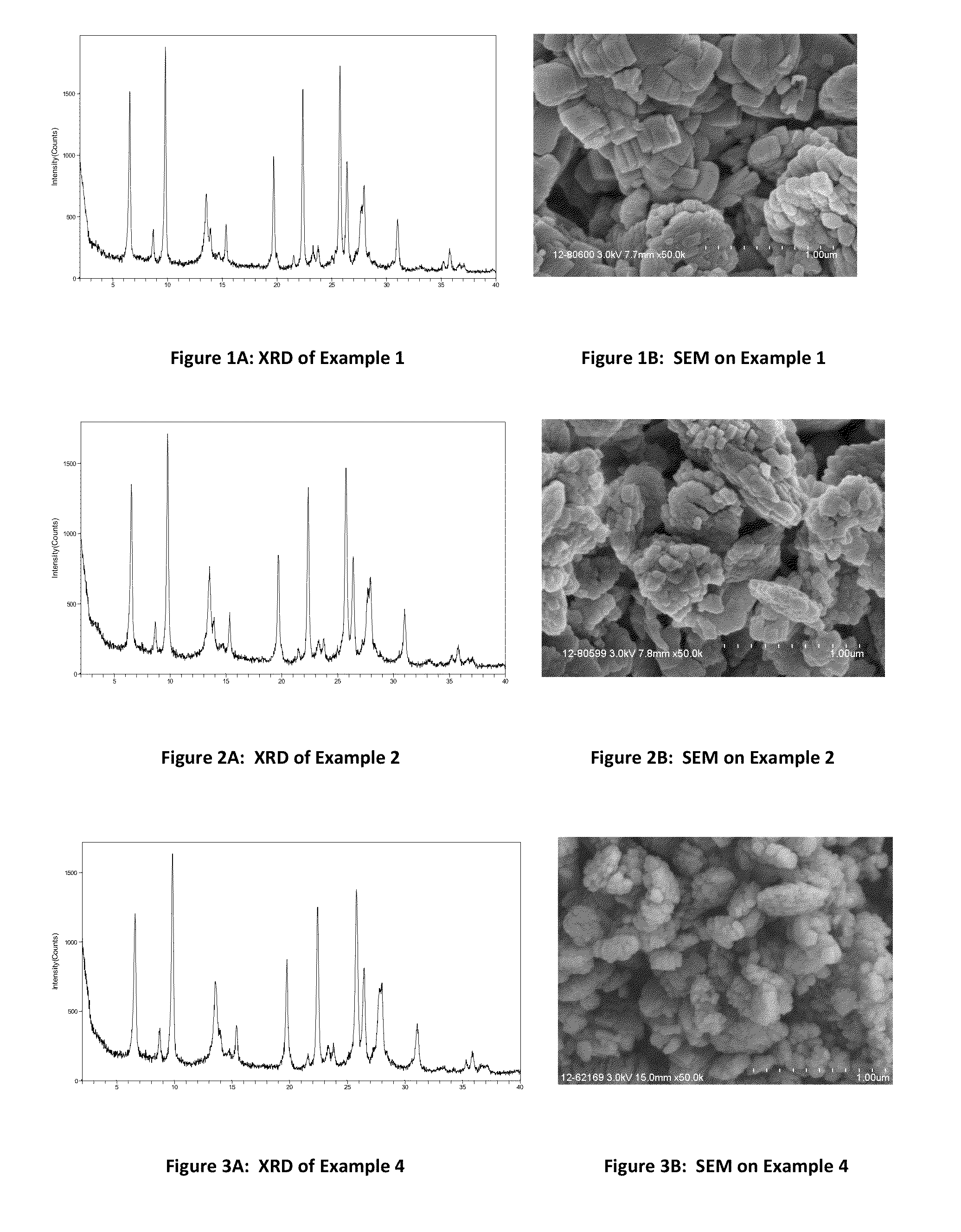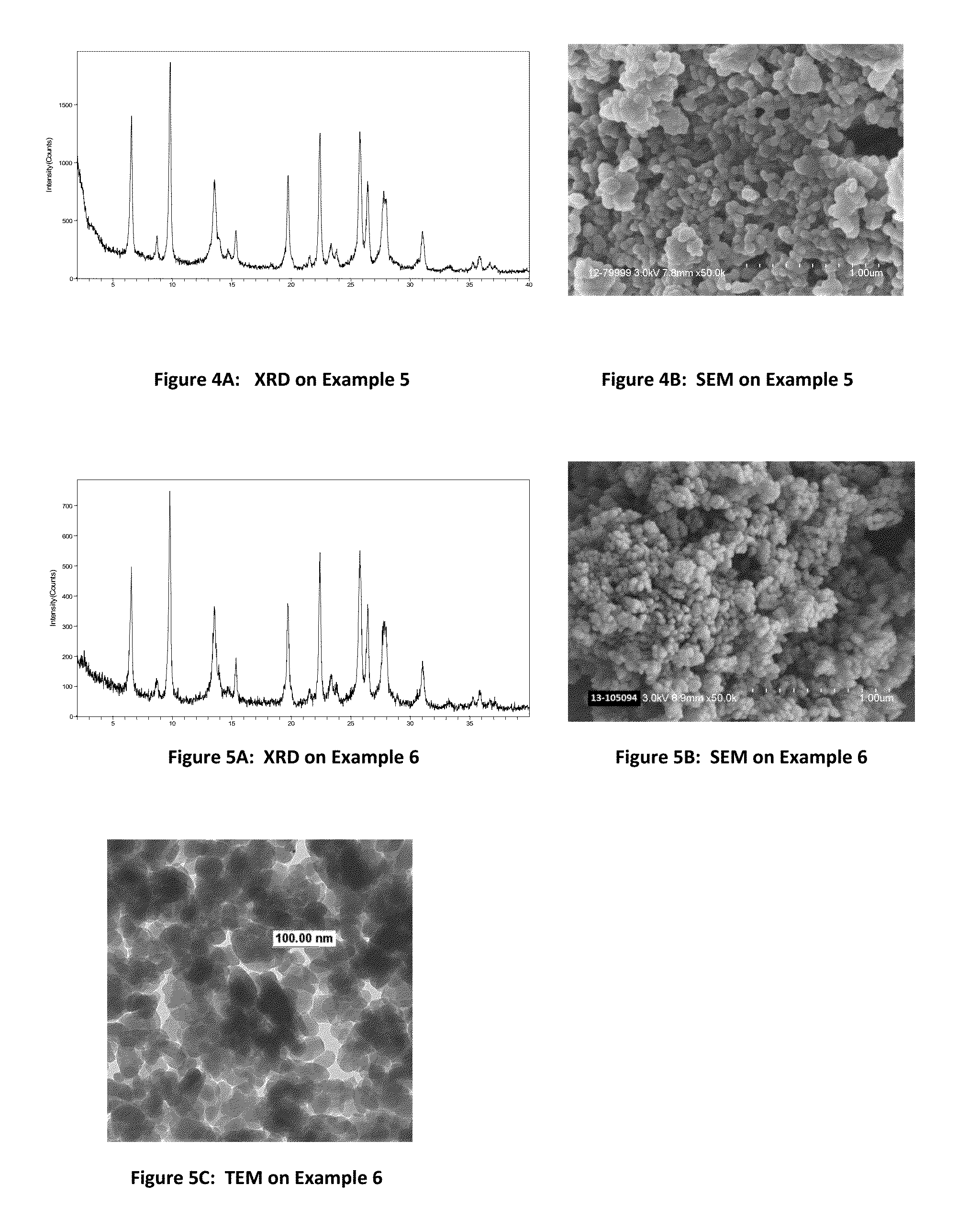Process for Preparing a Molecular Sieve
a molecular sieve and molecular technology, applied in the field of mordenite molecular sieve, can solve the problems of complex process of synthesis of molecular sieve, and achieve the effect of increasing the ratio of silicon to alumina, removing aluminum, and increasing the surface area of mesopores
- Summary
- Abstract
- Description
- Claims
- Application Information
AI Technical Summary
Benefits of technology
Problems solved by technology
Method used
Image
Examples
example 4
Synthesis of meso-Mordenite Crystals using TEABr as SDA with NaOH / Si of 0.29
[0112]A mixture was prepared from 1,030 g of water, 67 g of TEABr (50% solution), 212 g of Ultrasil silica, 48.7 g of sodium aluminate solution (45%), and 51 g of 50% sodium hydroxide solution. Then 10 g of Mordenite seeds was added to the mixture. The mixture had the following molar composition:
[0113]SiO2 / Al2O3—26.08
[0114]H2O / SiO2—19.48
[0115]OH− / SiO2—0.291
[0116]Na+ / SiO2—0.291
[0117]TEA / SiO2—0.049
[0118]The mixture was reacted at 300° F. (150° C.) in a 2-liter autoclave with stirring at 250 RPM for 72 hours. The product was filtered, washed with deionized (DI) water and dried at 250° F. (120° C.). The XRD pattern, FIG. 3A, of the as-synthesized material showed the typical pure phase of Mordenite topology. The SEM, FIG. 3B, of the as-synthesized material showed morphology of irregularly-shaped agglomerates composed of smaller & more uniform morphology of crystallites than previous examples. The primary crystall...
example 5
Synthesis of meso-Mordenite Crystals using TEABr as SDA with NaOH / Si of 0.29 at Larger Scale
[0120]A mixture was prepared from 10,300 g of water, 670 g of TEABr (50% solution), 2,120 g of Ultrasil silica, 487 g of sodium aluminate solution (45%), and 510 g of 50% sodium hydroxide solution. Then 20 g of Mordenite seeds was added to the mixture. The mixture had the following molar composition:
[0121]SiO2 / Al2O3—26.08
[0122]H2O / SiO2—19.48
[0123]OH− / SiO2—0.291
[0124]Na+ / SiO2—0.291
[0125]TEA / SiO2—0.049
[0126]The mixture was reacted at 300° F. (150° C.) in a 5-gal autoclave with stirring at 250 RPM for 72 hours. The product was filtered, washed with deionized (DI) water and dried at 250° F. (120° C.). The XRD pattern, FIG. 4A, of the as-synthesized material showed the typical pure phase of Mordenite topology. The SEM, FIG. 4B, of the as-synthesized material showed morphology of irregularly-shaped agglomerates composed of small crystallites. The average primary crystallite size appeared smaller th...
example 6
Synthesis of meso-Mordenite Crystals using TEABr as SDA at Higher Solids and a Lower Reaction Temperature
[0127]A mixture was prepared from 9,300 g of water, 804 g of TEABr (50% solution), 2,544 g of Ultrasil silica, 584 g of sodium aluminate solution (45%), and 612 g of 50% sodium hydroxide solution. Then 30 g of Mordenite seeds was added to the mixture. The mixture had the following molar composition:
[0128]SiO2 / Al2O3—26.10
[0129]H2O / SiO2—15.11
[0130]OH− / SiO2—0.291
[0131]Na+ / SiO2—0.291
[0132]TEA / SiO2—0.049
[0133]The mixture was reacted at 290° F. (145° C.) in a 5-gal autoclave with stirring at 350 RPM for 72 hours. The product was filtered, washed with deionized (DI) water and dried at 250° F. (120° C.). The XRD pattern, FIG. 5A, of the as-synthesized material showed the typical pure phase of Mordenite topology. The SEM (FIG. 5B) & TEM (FIG. 5C) of the as-synthesized material showed morphology of irregularly-shaped agglomerates composed of small crystallites. Several TEM photos on this e...
PUM
| Property | Measurement | Unit |
|---|---|---|
| Temperature | aaaaa | aaaaa |
| Temperature | aaaaa | aaaaa |
| Temperature | aaaaa | aaaaa |
Abstract
Description
Claims
Application Information
 Login to View More
Login to View More - R&D
- Intellectual Property
- Life Sciences
- Materials
- Tech Scout
- Unparalleled Data Quality
- Higher Quality Content
- 60% Fewer Hallucinations
Browse by: Latest US Patents, China's latest patents, Technical Efficacy Thesaurus, Application Domain, Technology Topic, Popular Technical Reports.
© 2025 PatSnap. All rights reserved.Legal|Privacy policy|Modern Slavery Act Transparency Statement|Sitemap|About US| Contact US: help@patsnap.com



